The most successful search marketers use a simple hack to scale their SEO performance – and it has nothing to do with search engines, links, or content. What's the secret to their success? Sending strategic SEO reports.
But the reports do even more than that, actually.
You see, those marketers align everyone in the organization to their goal – increasing visibility in search results and attracting as much organic search traffic as possible.
Why does this work? Because it’s only when every stakeholder sees the value of SEO in terms of their goals that the true growth of an organization happens.
We spoke a lot about this idea recently. For example, our co-founder, Mitul, advised on bringing the SEO strategy in-house. In another post, he shared his recommendations for spreading SEO across an organization.
In this post, I'll illustrate another way to help evangelize search engine optimization within your organization. I’ll show you how to use SEO reports to demonstrate the value that the channel delivers across various departments – not just the organization as a whole.
Before we discuss how reporting on SEO progress works, let’s discuss why this strategy is so powerful at solidifying your work in the organization.
Data is at the Center of Businesses' Decisions
According to business intelligence platform, BI-Survey, companies use at least 5 – and sometimes up to 20 – data sources to inform their decisions.
They’re right in doing so. A study by the Sloan School of Business discovered that companies that focus on data for decision-making experience a 6% higher productivity and output.
Although it might not seem like much, six percent across an organization can contribute to enormous growth. One reason for that is predictive thinking. As PwC mention in their Global Data and Analytics survey:
Highly data-driven decision-makers look backward when needed, but they also use predictive and prescriptive analytics to model the future.”
But what’s that got to do with SEO?
Quite a lot, in fact. When speaking of the SEO Center of Excellence, Mitul mentioned two key challenges enterprise organizations face with scaling SEO:
- Lack of company-wide buy-in, and
- Inconsistency in SEO efforts.
I’m going to leave inconsistency aside; the issue is separate to our discussion. The buy-in, however, relates directly to the data.
It’s hard for anyone to absorb the idea of SEO without understanding the effect it has on their work, goals, and objectives first.
Take your IT colleagues, for example. The role of an IT team is to provide the primary data-processing architecture for the project, determine the technical specifications for the overall web development framework, assess the development of strategy and goals, and match those needs to appropriate technology solutions.
When you talk to them about SEO-related issues – say, broken links – you discuss something that isn’t aligned with their goals. Showing proof of how a well-built and optimized website increases user engagement, however, immediately aligns SEO with their goals.
Similarly, a management team of a particular hotel property will, most likely, pay little attention to SEO. They’re too busy overseeing everyday operations and trying to meet sales targets, after all.
However, their attitude might change once you show them how growth in search visibility or a boost in online reviews can contribute to their bottom line directly.
Suddenly, helping out with SEO seems beneficial to their business, doesn’t it?
What’s important is that, in both examples, the way to communicate the value of SEO is through reporting.
Showing every department the data which explains the effect of SEO on their work, goals, and objectives can change their perception of it immediately.
There is, however, a slight challenge here.
SEO Reports for the Whole Organization Only
Unfortunately, from experience, I can attest how often SEOs fail at communicating the value of their channel.
For one, many of them issue a single report, covering one of the following scenarios:
- Metrics they find important (specific search terms come to mind), or
- All metrics they track, or
- Data for the C-suite only.
In the process, many of them disregard one crucial aspect - whether the report’s recipients actually understand the significance of those metrics.
Many SEO reports I’ve seen focused on rankings, for example. I agree that search positions are a prerequisite to gaining search visibility and achieving other business goals.
However, for anyone apart from SEOs, a shift in rankings signifies absolutely nothing. Certainly, it doesn’t communicate the value of the channel to the recipient.
The situation is no different when you’re reporting on backlinks, organic traffic, content engagement, and many other metrics.
But don’t get me wrong, all this data and reports are important. But they aren’t for everyone.
To align the entire organization to SEO, make the data you report relevant to every person or department you want on your side.
Instead of creating a single report, you must output separate data for everyone involved to show the impact of SEO on their work.
The good news? Doing so isn’t difficult. However, you must know what reports to issue for different stakeholders.
Before we dive deeper into the topic, though, we should explain some SEO report-related terminology and concepts. Understanding them will help you gain the most from the advice that follows.
In particular, I see marketers confusing two terms often – report and a dashboard. Since we’ll be using both in the following sections extensively, let's briefly define them.
What is an SEO Report?
An SEO report provides an in-depth overview of a company’s SEO activities. It shows the results you’ve generated, discusses activities you focused on in the period covered in the report and so on.
Typically, such a report would also cover what you intend to do next and the results you hope to generate. You create it as proof of your activities, typically. Sometimes a report also helps consolidate data to make strategic decisions about new initiatives.
A dashboard, on the other hand, helps you to monitor changes to a specific goal or metric over time. Unlike a report, a dashboard is quick to digest, collects the data at regular intervals automatically, and allows you to uncover insights at a granular level.
What Makes a Good SEO Report?
We've talked about the benefits of strategic SEO reports already. We've also talked about what they are and what makes such marketing reports different from dashboards.
But what makes a good SEO report, really?
Well, let's define it by looking at what a good SEO report is not.
A poor SEO report:
- Includes a lot of data that most of its recipients find pointless.
- Alternatively, it might also include not enough relevant data, making the whole report meaningless to its recipients.
- Or, it offers little insights that would communicate the value of the channel for the specific recipient.
A good report, on the other hand:
- Summarizes the most important data points.
- Provides additional information to make the data easier to understand.
- Provides actionable insights that relate to the recipients situation.
What to Focus on When Reporting SEO Strategies
Clients often ask me, “What should I include in an SEO report? What information will help demonstrate the value of my work to others?”
Although the question suggests a quick list of KPIs or metrics, I prefer not to answer it this way. At least, not without explaining the process for generating solid SEO reports first.
Because, to report on SEO, you must make some decisions first.
First, who is the report for? As you’ve seen above, SEO reports help align the entire organization to SEO. However, to do so, you need to issue individual reports to key stakeholders.
And to determine what information to present, you must identify who is going to be reviewing your report, specifically.
Second, what are the organization’s goals and how does the target department fit into it? For example, a hotel chain wants growth through constant bookings.
An individual hotel in a chain helps achieve this by supplying their share of bookings. So, that property manager will care about how SEO helps the hotel stay booked fully.
Based on the above, you can make strategic decisions about what to include in your SEO report.
- You can match the data to the department's objectives, making it relevant to their needs and their situation.
- You can also present SEO from their perspective, meaning that instead of reporting on what you care about, you deliver metrics those people can understand and relate to.
- Finally, you can explain your specific activities better. It is easier to understand why you've performed a specific action when it is tied to an outcome the person cares about and understands.
Here are some examples of how to do it:
Focus on sales, bottom line, and assisted conversions in the report for your CEO. Also, show the year-over-year progress you’ve made with those.

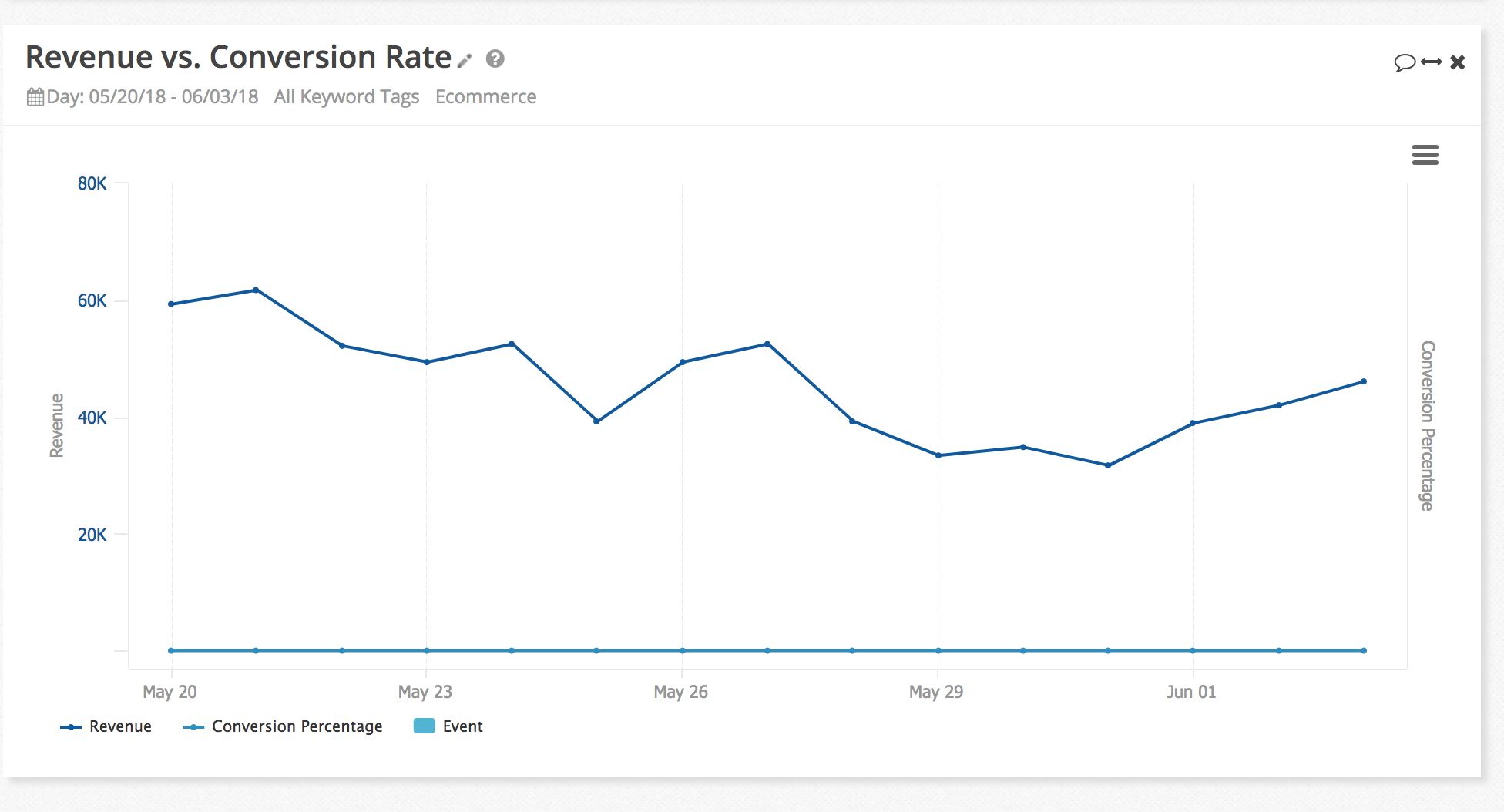
When speaking to regional managers, for example, highlight positive reviews or satisfaction scores, and show how they contribute to higher visibility and more sales.
Show the IT department how improving site speed or reducing usability errors leads to greater user engagement.
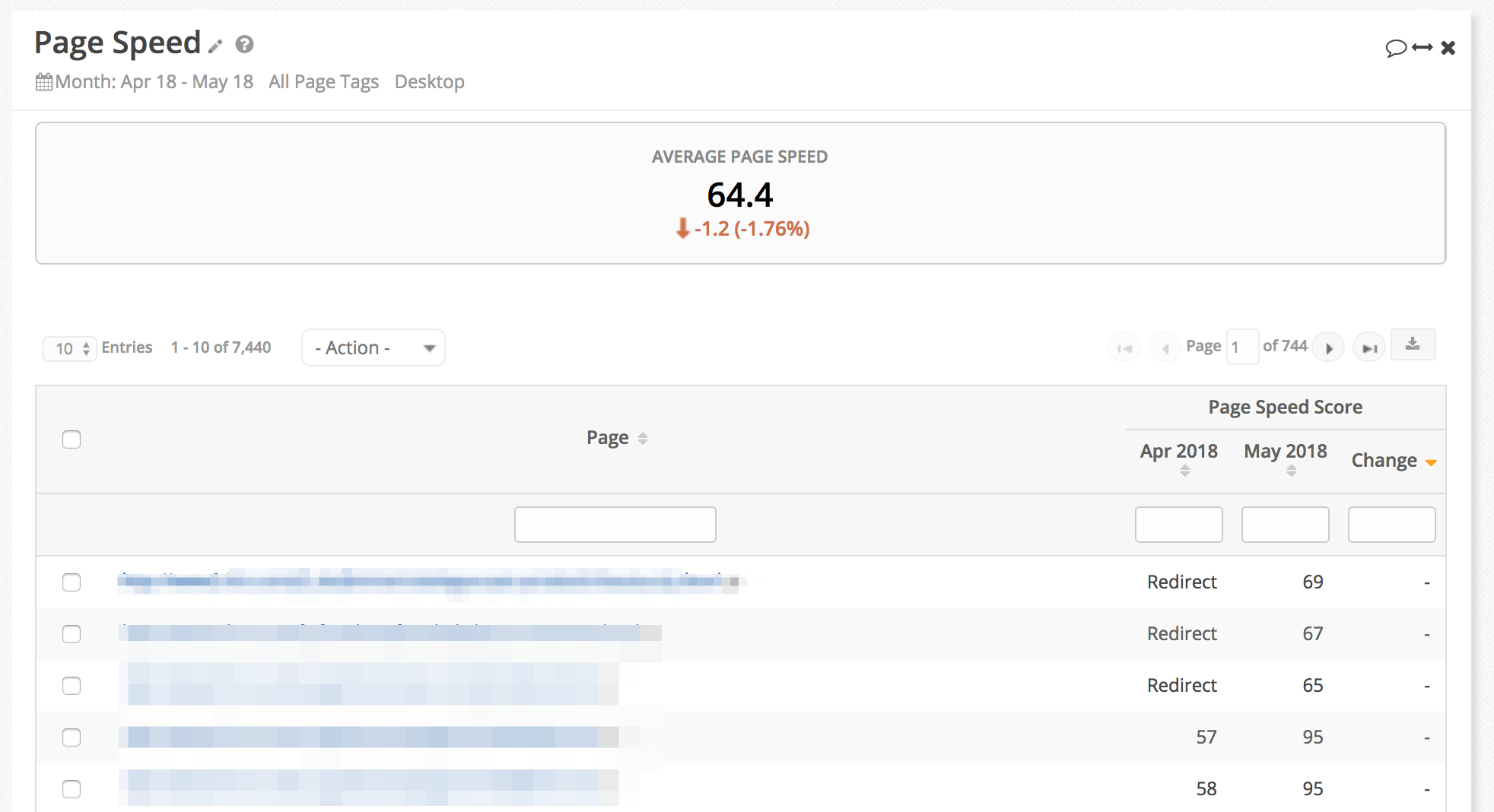
PR departments prefer to see the engagement and impact content has had on brand visibility, and so on.
In other words, the key to aligning other departments to SEO is to identify metrics and data that presents it in the context of their goals.
Third, how are you going to report to those people easily? To most, the term "SEO report" is synonymous with a lengthy document, typically sent in a PDF format. It contains long lists of keyword rankings, with associated landing pages and other relevant metrics – bounce rate, click-through rate and so on.
In truth, however, there is an easier way to report to relevant stakeholders: custom SEO reporting dashboards.
The above brings us back to my clients' question: "What should I include in an SEO report?”
The answer? Use data showing how much the recipient has gained from SEO. It will motivate them to think about the channel more seriously.
Let me show you some SEO dashboard types to illustrate it.
Dashboards with Critical SEO KPIs
Such dashboards track information you or a stakeholder for whom you issue it would want to see regularly. These dashboards are ideal for anyone who has a deeper interest in the critical SEO metrics. It could be a marketing manager, CEO or anyone who wishes to track SEO performance closely.
Examples of such dashboards include:
- Organic traffic
- Ranking reports
- Site audits
- Backlink growth
- Sales/leads or other results from the organic channel
View Examples of SEO Dashboards For Different Teams and Goals
Dashboards that Show the Value of SEO
These SEO reports focus on presenting how SEO aids the organization in reaching its business goals. Metrics on those dashboards might vary, depending on whom you report to or what your company aims to achieve.
Overall, however, they offer an incredible opportunity to demonstrate how your work affects the business positively.
Example dashboards include:
- Rankings or traffic to specific divisions, locations, departments or other business units.
- Executive-level reporting and metrics.

(Ranking Performance Dashboard in seoClarity.)
Competitive Intelligence Reports
A competitive report compares what other brands targeting the same keywords as you are doing with your actions. Its goal is to reveal your competitive edge and uncover new initiatives to strengthen it further.

However, there is one more problem with SEO reporting we must address …
How to Output Reports to Demonstrate SEO Value
Let’s face it, reporting takes a significant amount of time. In my career, I’ve spent countless hours outputting reports one after another. And doing so would always interfere with doing the work that matters – generating results from SEO.
I know that I'm not the only one struggling with this problem. From conversations with our customers, we know that analyzing the data can take up to 22% of SEOs time.
But, only if you don’t have the right SEO reporting tool to do it; one that would:
- Give you access to all the data you need instantly,
- Provided you with a way to generate unlimited dashboards incredibly fast, and
- Pose no limitations as to how much data you can analyze and include in a report.
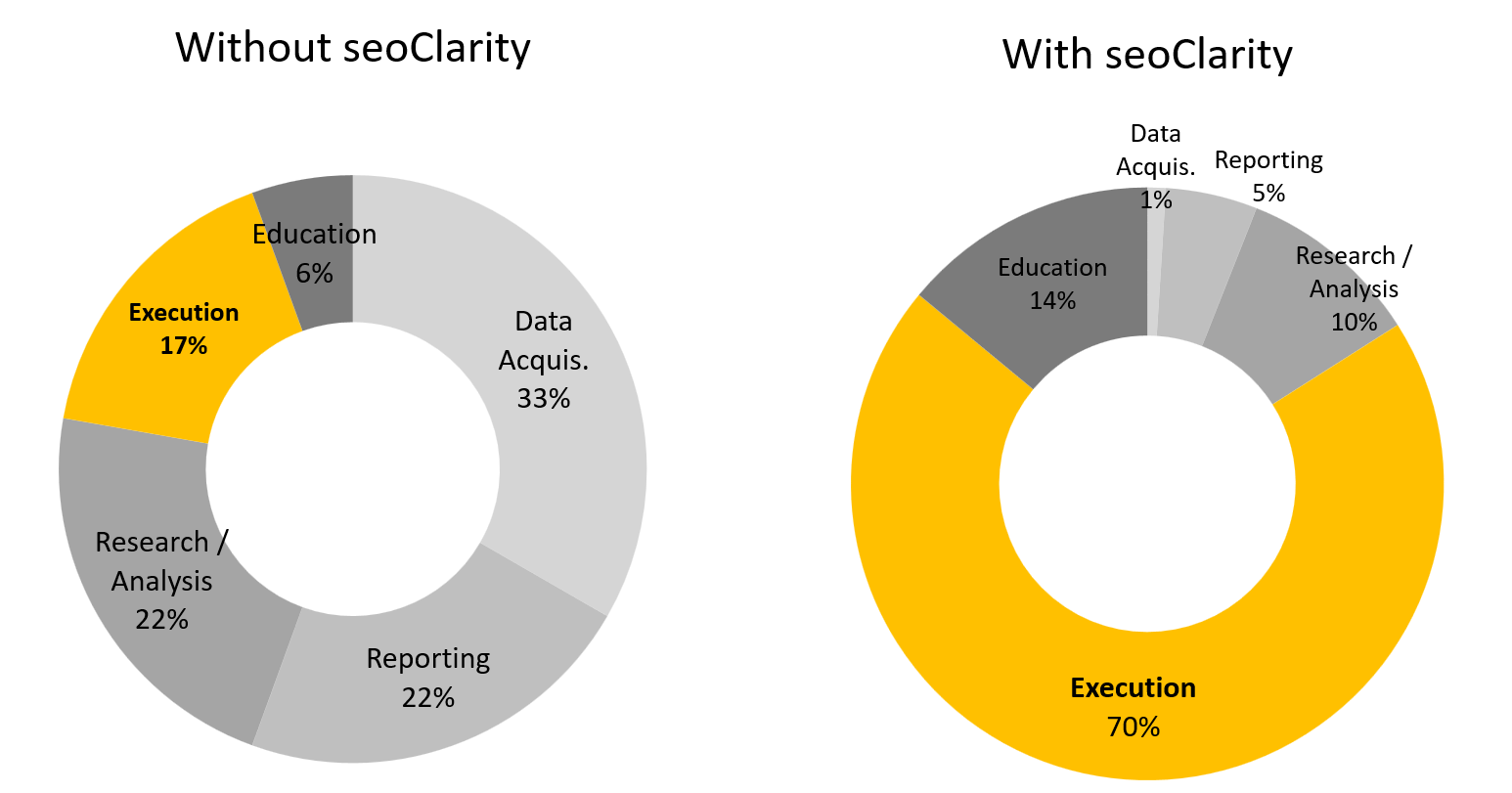
Again, I have data to prove it. Most of our clients admit that using an enterprise SEO platform like seoClarity reduced reporting time to 5% of their day only. And that’s regardless of how many reports they produced simultaneously!
Incredible? Not so much, particularly if you consider the power an enterprise-level platform offers for your brand.
Conclusion
Growing organizations everywhere should aspire to scale their SEO. However, only a few truly achieve a seamless synergy. Their secret? Aligning all relevant departments around a common goal of increasing search engine visibility and revenue.
Reporting allows each team to monitor performance and communicate that message throughout the organization. By tailoring reporting to each department, you are able to present search engine optimization in the context of their goals and objectives.
You can identify assisted conversions and the conversion rate that is contributing to ROI and celebrate the successes of each department.
Would you like to see seoClarity in action to learn how a platform helps scale your work? Reach out to our team and schedule a demo today.
Editor's Note: This post was originally published in July 2018 and has been updated for accuracy and comprehensiveness.



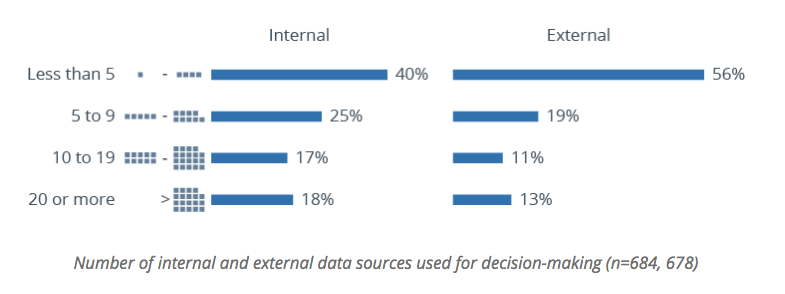

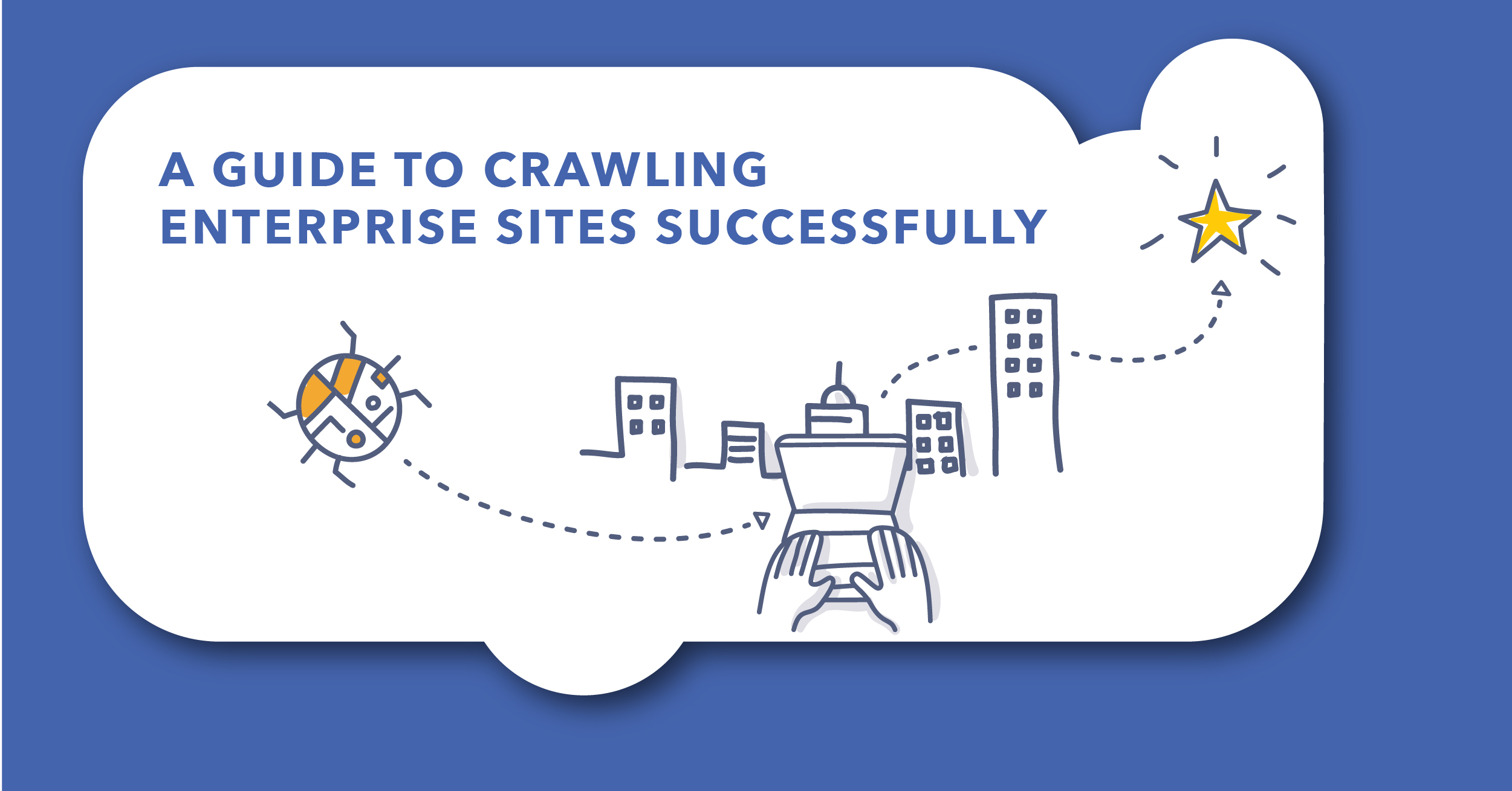

Comments
Currently, there are no comments. Be the first to post one!